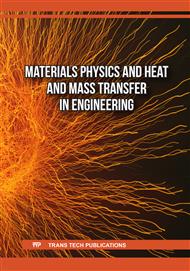p.3
p.13
p.21
p.27
p.41
p.47
p.57
p.63
Defect and Thickness Optimization of Perovskite for High Efficiency Solar Cells
Abstract:
In this paper, we examined CH3NH3PbI3 potential as an absorber component for perovskite solar cells (PSCs). We used CuSCN (copper thiocyanate) as the hole transport layer and, ZnO as the electron transport layer to optimize work the device, in the CH3NH3PbI3-based perovskite solar cell, and we used the solar cell capacitance simulator (SCAPS-1D). Exemplary perovskite solar cell is made up of six main layers, each of which is composed of a different material: glass, a thinning layer of fluorine-doped tin oxide substrate (FTO), ZnO for electron transport, CH3NH3PbI3 for methylammonium lead iodide for the perovskite effective layer, copper thiocyanate for hole transport, and platinum (Pt) for the electrode. The best Optimized device structure, FTO / CuCSN /CH3NH3PbI3 / ZnO /Pt, had a power conversion efficiency of 42.69%, according to simulation data. We examined the impact of changing thickness, defect density, and temperature on the efficiency of the device. The Optimum efficiency we get at thickness 10 μm is 42.69%, which is a promising result, Jsc is 29.766433 (mA/cm2), and FF is 91.39% and Voc is 1.5692 (V), best efficiency corresponds to defect density 1*. while, we note that the efficiency of perovskite solar cells decreases gradually at increase temperature.
Info:
Periodical:
Pages:
27-37
Citation:
Online since:
June 2024
Keywords:
Price:
Сopyright:
© 2024 Trans Tech Publications Ltd. All Rights Reserved
Share:
Citation:



